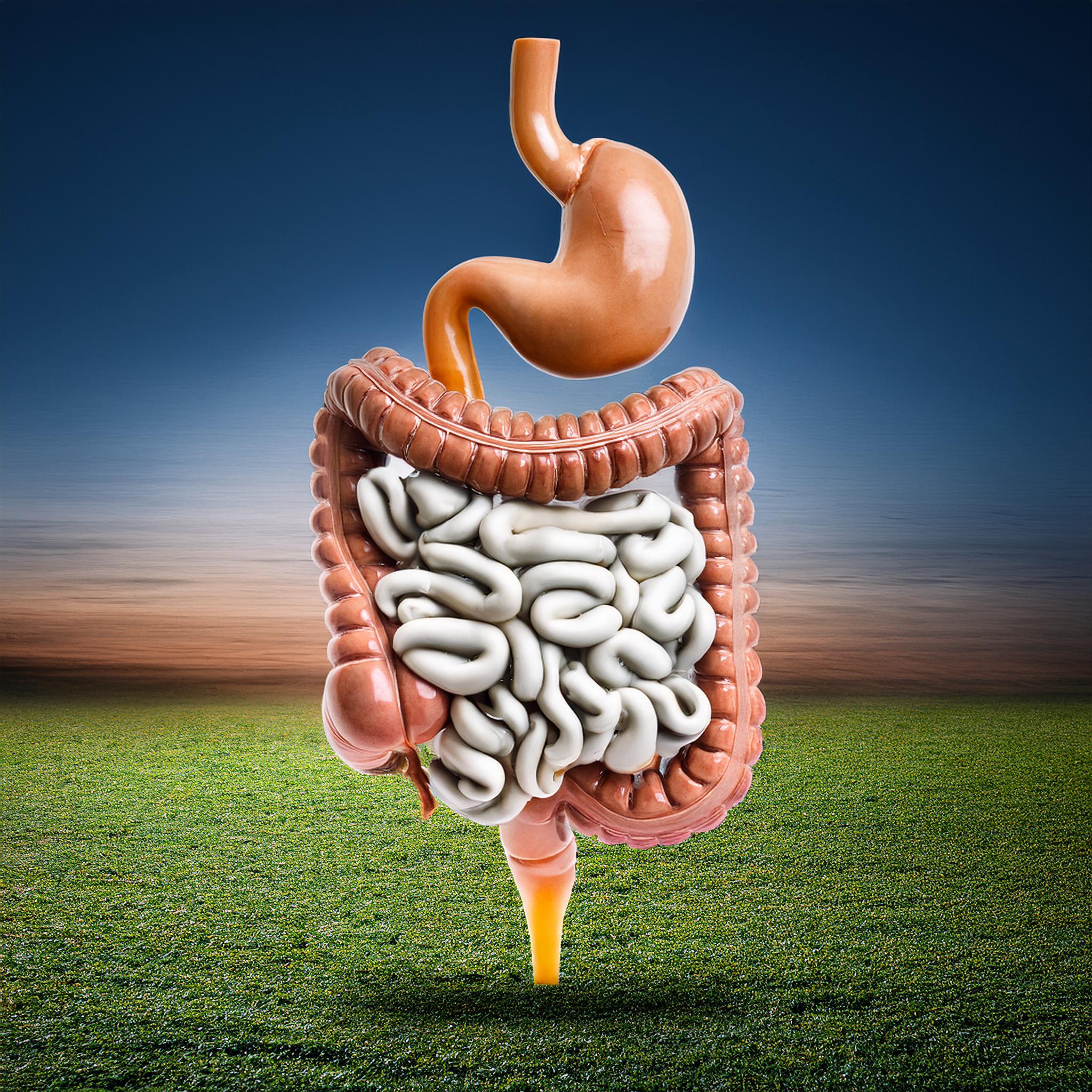Mamsa Dhatu - Muscle System in Ayurveda

by Rishi Forrester and Danae Delaney
Mamsa Dhatu refers to the 3rd tissue in the evolution of the dhatus in Ayurveda. This tissue governs muscles, tendons, skins, and various excretions of the body. Our focus is on the increase and decrease of the mamsa dhatu in relation to emaciation, weight loss, and weight gain. emaciation and weight loss can be closely tied to Mamsa dhatu because it is closely tied with Earth and Fire and its manifestation in the body.
(In the image above, we show the GI Tract. Our GI Tract is called Annavaha Srotas in Ayurveda and the tissue there is also made up of mamsa dhatu or muscle tissue. We know that kapha works through tissues/dhatus.)
With emaciation and weight loss there is a loss or decrease of Mamsa Dhatu. This is called Mamsa Kshaya and is characterized by thinness, exposed bones, sunken eyes, and wasted muscles. Weight loss in general is a less severe form of emaciation of Mamsa Kshaya. In order to increase Mamsa dhatu, consume heavier nuts, grains, and legumes along with sweet and salty tastes. In addition, creating a stable routine that contains grounding and muscle building practices are appropriate as well, but only if the vitality supports that. Care should be taken to make sure that the Jatharanagi and subsequent agnis are strong and not Manda causing poor formation of the preceding tissues (rasa and rakhta). warming spices that are not drying and reducing are appropriate along with sweet and building herbs such as Bala, Ashwagandha, and Licorice. Focusing on improving strength and density are ideal along with balanced grounding attitudes.
With weight gain, there can be an issue of excessive Mamsa Dhatus calld Mamsa Vruddhi. (Increase)
This will cause excessive and undue growth of the Mamsa Dhatu and reveal itself in fibrotic tissues, enlarged facial muscles, muscle flaccidity, and excessive muscle formation. Herbs that increase agni such as trikatu or any pepper/ginger combination are good as well as aerobic exercise to increase movement and reduce density. Focusing on improving flexibility and movement are key and includes cultivating flexible attitudes as well.
Mamsa Dhatu vitiation is caused by “the intake of heavy, gross food, food with deliquescent properties, and sleeping after meals.” (“Mamsa Dhatu,” Dr. K.S. Pingle)
The properties of Mamsa sara include: well-covered joints, a plump and beautiful appearance of the forehead, temples, cheeks, jaws and abdomen. The person is stable, heavy, and the forgives easily with much patience. If mamsa dhatu is increased, there will be weight gain, due to the extra thickness of the tissue and the increased amount of asthayi meda dhatu. The face will be round and plump, as will the joints on the body. Additionally, the skin will be thicker and the person will be less flexible. If mamsa dhatu is decreased, the skin will become thin, weight loss and even emaciation can occur. The cheeks and forehead, temples and eyes and even the abdomen will become sunken is due to the loss of mamsa dhatu.
The doshas can also travel into mamsa dhatu and create tissue changes to the quality of mamsa dhatu, called dushti. If Vata dosha travels into the mamsa in excess, there will be acute pain in the muscles, spasms, tremors, fatigue, and a wasting of the muscle with dry skin. If Pitta dosha travels into mamsa, boils or red skin will appear and there will be inflammation, fibromyalgia, fatigue, and tendonitis. Kapha in the mamsa dhatu will show as swelling, flaccidity, excess ear wax and nasal crust with possible uterine fibroids, fibrocystic breasts, heavy and “sticky” muscles, inflexibility.
For increased mamsa dhatu, a basic protocol is a Kapha pacifying diet, including, light foods, Trikatu, Kutaki, Ginger, Yoga with movement that can increase the heart rate and warm the muscles, and aerobic exercise. Decreased mamsa dhatu can be helped by a Vata pacifying diet with the herbs: Bala, Ashwagandha, Shatavari, milk, wheat, meat, weigh lifting, and easy yoga, holding a few poses and relaxation. Kapha imbalance needs increase in agni and heat to the body to melt bodily tissues. Vata imbalance also needs warmth. Vata imbalance needs a nurturing warmth and heavy foods to encourage tissue growth.




